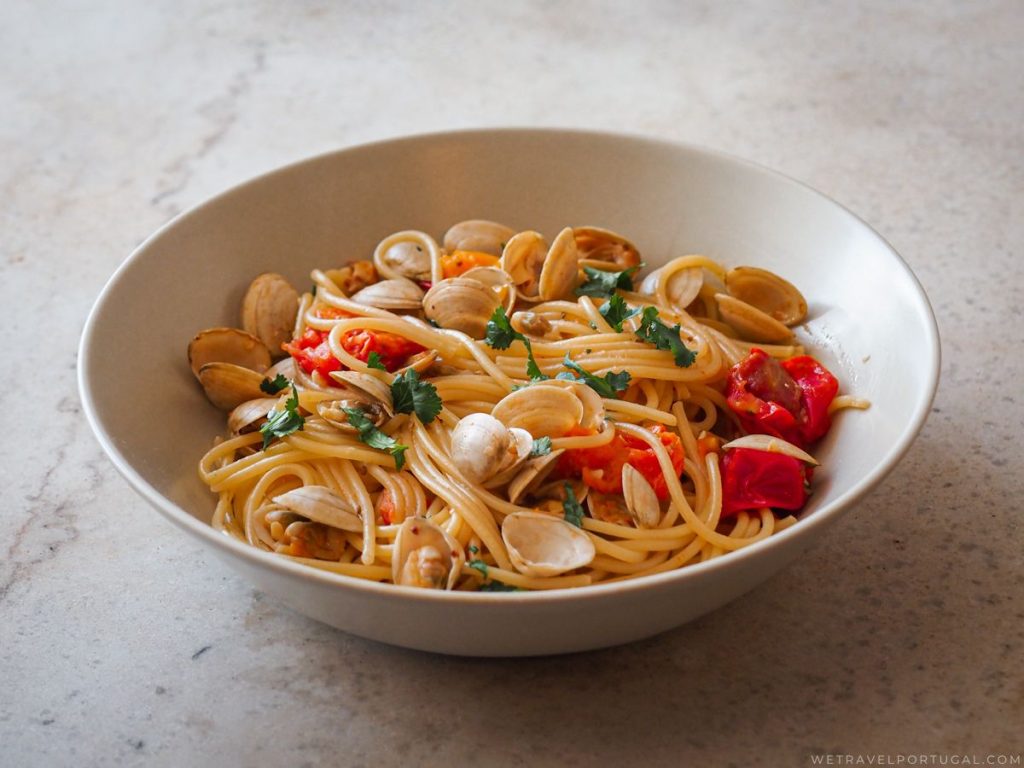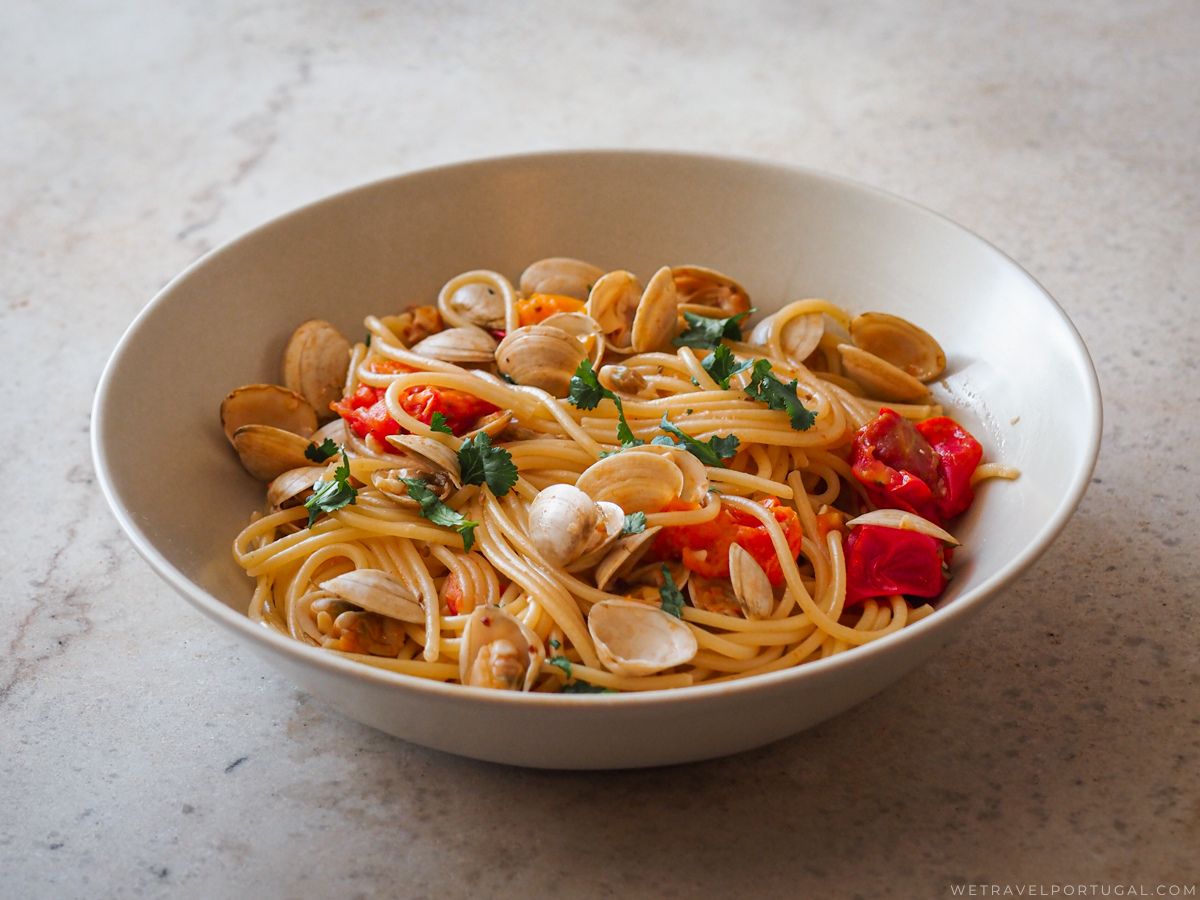Esparguete com Amêijoas, is a simple Portuguese pasta dish made with fresh clams. Although pasta dishes are usually associated with Italian cuisine, you’ll find Portugal also has a rich variety of them too. Travel near any coastal region and you’ll soon find an array of seafood pasta dishes which are some of our favourites to come across. They’re often deliciously simple, sometimes even just pasta added to a regional dish or local food produce.
Esparguete com Amêijoas
One of our favourites is Esparguete com Amêijoas, you can usually find it in seafood restaurants or usually any café that’s close to the coast or a fish market! If the basic recipe and ingredients sound familiar to you, that’s because it should.

It’s the traditional dressing used in a lot of Portuguese shellfish recipes, olive oil, garlic, coriander and white wine. It’s used to great effect in the classic Ameijoas à Bulhão Pato. We always recommend serving our clams with some crusty bread for the left-over dressing. Our Esparguete com Amêijoas swaps the bread for a healthy serving of pasta to serve with that delightful sauce.
Discover: Ameijoas à Bulhão Pato

Spaghetti with Clams Recipe
For this recipe, we used Amêijoa Branca (White Clams), lots of alternatives are available, so pick which looks best or freshest at your local market of choice! Similarly, feel free to mix things up with the pasta choice, this dish works well with any long pasta shape.


Let us know what you think in the comments!
Looking for More Portuguese Seafood Recipes?
- Portuguese Pork and Clams – Carne de Porco à Alentejana
- Massada de Marisco – Portuguese Seafood Pasta
- Arroz de Marisco – Portuguese Seafood Rice
- Arroz de Tamboril – Authentic Monkfish Rice
Follow Us!


